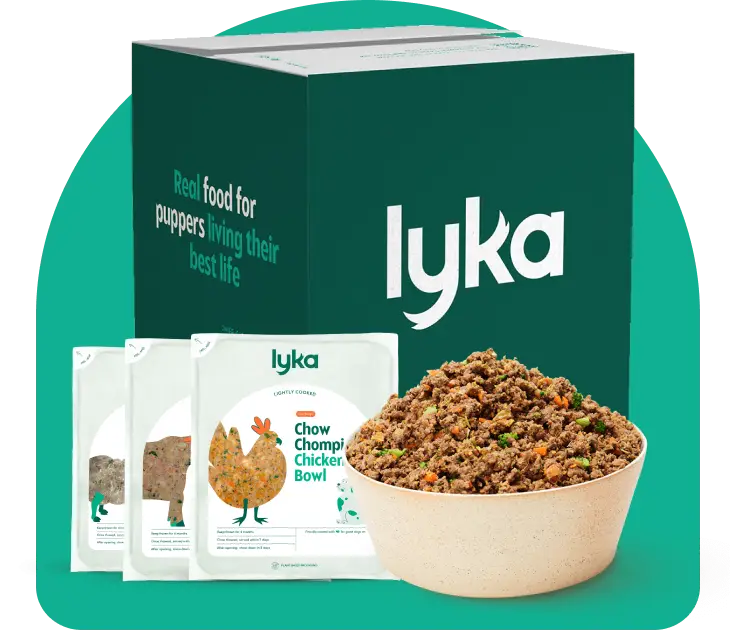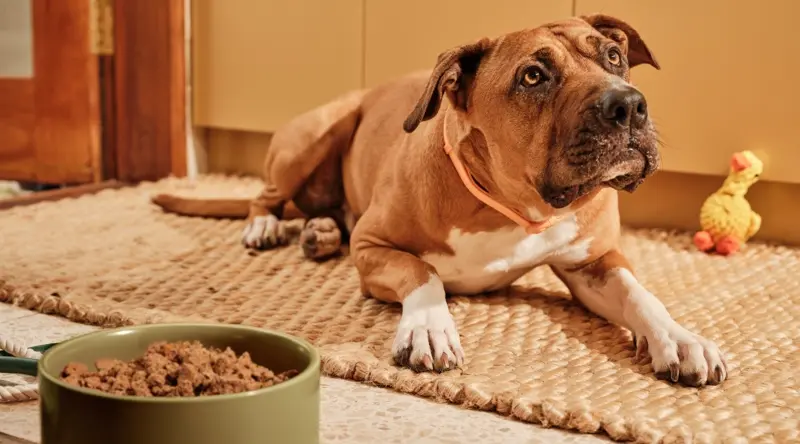Embarking on a dog-sitting adventure or entrusting your precious pup to a caregiver can be nerve-wracking for both parties. But don’t worry, we’re here to help.
Welcoming a dog into your home is a wonderful experience, but it does come with its share of responsibilities, almost like having a child!
If you’re a dog parent, you know how much your life revolves around your pup’s routines, so it can come as a bit of a surprise to new pet sitters.
Our comprehensive dog-sitting guide has tips to accompany you every step of the way, so you can focus on having fun with your four-legged guest. If you’re the parent, this guide helps you easily share all the important information your sitter needs.
Get started by downloading our free resource to help you record and organise everything you need for their stay. When it comes to dog-sitting, preparation is key!
Dog-sitting essentials
Always arrange a meet and greet first, especially if you don’t know the dog. It’s a good opportunity for a friendly pat (and sniff) and to gather details from their parent using our free checklist.
1. Collect vital contact information
Record the dog parent’s contact information and their vet’s name, number and practice. It’s also handy to know the microchip number and where to go if there’s an emergency.
The dog likely has their own best friend; a pup that matches their size, energy and play style. Record the contact details for this dog’s parent so you can arrange play dates or ask for support if needed.
2. Confirm any medical details
Make sure you know if the pup has any medical issues and takes medication. Establish their medication schedule, how to administer the meds correctly, and know the signs of ill-health to watch for. Their vet should have the dog’s medical history too.
3. Establish the mealtime routine
Most dogs are creatures of habit and get used to being fed at the same time each day. Make a note of their mealtime routine, diet, portions and any food allergies or intolerances.
If they’re on a Lyka diet, check you’ve got space in your freezer for their personalised portions. Have two days’ worth of food in the fridge at any time, so there’s always some ready to eat and fewer in the freezer.
4. Discover their daily exercise needs
Like mealtimes, your four-legged visitor also has an exercise routine and may get anxious if things change. Taking the dog for a walk or a play at the local dog park (if they’re allowed) is a great way for you to enjoy the outdoors too.
Avoid feeding the dog immediately before or after exercise so they don’t get bloat.
5. Instructions on feeding treats
A tasty tidbit is a great way to reward good behaviour, reinforce training and strengthen your bond with your furry houseguest.
Only give treats according to the parent’s instructions and the dog’s dietary requirements. Remember, never give more than 10% of their daily calories in treats.
6. Bedtime routines for deep sleep
Establish the dog’s sleep routine including:
Where they sleep — bed, crate, or with you!
What time they go to bed and wake up
If they’re likely to need a bathroom break during the night
If they have their teeth brushed
Try to maintain the routine to minimise the change to the dog’s life.
7. Any other dog business?
Always ask the parent if there’s anything else you need to know to help you understand your fur-guest better. Every dog is different and has their own special quirks or body language.
It’s also good to know if they’re afraid of anything like thunderstorms or vacuum cleaners and the best ways to calm them.
Preparing for the dog's arrival
Protect your belongings and keep everyone happy and safe by preparing your home, car and family for the dog’s arrival.
Remember, if it feels overwhelming during the first few days of dog sitting, that’s normal. You’ll soon get the hang of the routine and the new company!
Make your home dog-friendly
Walk through your house and look at everything through the dog’s eyes.
Identify items at dog level that could be potential hazards or tempting to play with like vases, shoes, sports equipment, power boards, and soft furnishings.
Place them out of reach and away from curious canine eyes (and noses).
Make space for their bed, bowls and blankets
Dogs spend up to 16 hours sleeping or up to 20 hours if they’re a puppy! They need a comfortable, warm spot for their bed where they can rest undisturbed.
Place their bowls where they can access fresh water throughout the day and eat without distraction.
Check what the dog is allowed to do at home as they will behave in the same way at your house. If they’re allowed on the furniture, use a blanket or a throw to protect the material from fur and dirt. Use one from their home that smells familiar and comforting to help with the transition.
Prepare the car for trips to the park
If you need to drive to the park or go out on day trips, prep your car for a furry passenger.
First, decide where they will ride: the boot or the backseat. Then use a blanket or old towels to protect the area from mucky paws, slobber chops and shed hair.
Always carry an extra towel for spontaneous swims, unpredictable downpours and tempting puddles!
We highly recommend using a dog-specific restraint in the car to prevent distractions while driving. The dog parent may have a seatbelt attachment or a harness you can use.
Get the pack ready to meet the pup
It’s exciting to have a dog stay with you, but it can be quite overwhelming for some pups.
If you have children who aren’t used to dogs, make sure to talk to them about what to expect and how to help the pup settle into your home. Keep the number of guests to a minimum and try not to host large gatherings or parties that might stress the dog.
Learning some basic dog body language is a great way to understand how they’re feeling. Here are some handy hints to help you and your kids meet the dog appropriately:
When the dog first arrives, let them come to you for a first sniff. Resist the urge to give them lots of big hugs and only offer a gentle pat from the side if they’re receptive.
Learn how to read their body language to understand their emotional state.
A happy dog will be energetic with a wagging tail, affectionate licks, and play bows. They might even present gifts as a not-so-subtle invitation to play.
If they’re anxious or overwhelmed, they will display signs of stress instead. If you see any of these signs, give them space and time to adjust and allow them to instigate interaction.Try not to hug the dog. Not all pups like the feeling of being held. One-handed pats and rubs are a great way to show affection without limiting the dog’s movement.
)
'What if?' FAQs
Making your environment dog-friendly is pretty simple. It’s the possibility of the ‘what ifs’ that can make us feel uneasy.
We’ve got some great tips on what to look out for with our dog sitting FAQs:
What if the dog vomits or has diarrhoea?
Dogs experience the world through their nose and sometimes their mouths, making it easy for them to pick up pathogens and experience tummy troubles.
Check out our poo and vomit guides to help you understand what may be causing the problem and make an appointment with the vet if you’re concerned.
How do I give the dog a bath?
If your visitor rolls in something stinky or finds muddy puddles irresistible, then you might need to give them a bath or shower.
Local pet shops often have dog baths you can use and some even provide shampoo and conditioner. Some car washes even have pet washes too!
Never use human shampoo, it’s too acidic for their skin. For a happy at-home grooming experience, try a dog-friendly shampoo from the pet shop instead.
And be warned...you will get wet!
The dog ate something they shouldn’t, what should I do?
Some food is toxic to dogs including onions, raisins, grapes, chocolate and xylitol, a common artificial sweetener.
If you are concerned about what they’ve eaten, call the vet for advice straight away.
How do I treat a tick bite?
Unfortunately, ticks are a common problem in Australia and paralysis ticks are the worst.
Always find out what parasite prevention the dog is given. If it’s medication, establish the last date of treatment.
Check for ticks after every walk, especially around their ears, eyes, mouth, armpits, the base of their tail and between their toes. Most of the time you’ll be able to see the tick attached to their skin, but sometimes they can burrow deeper creating a lump.
Ticks should be removed carefully so that they come out intact. If any part remains buried in the skin, it can become infected.
For complete peace of mind, visit the vet so they can remove the tick correctly. They’ll identify the tick species and give the dog a quick health check.
What do I do if the dog goes to the toilet in my house?
Some dogs want to mark their territory, and some urinate if they’re excited or anxious.
Clean and disinfect the area and use an odour removal solution to discourage further accidents.
Make sure that they’re given regular opportunities to relieve themselves throughout the day. Give them praise and a reward for eliminating in the right spot and never discipline them harshly, as this can cause fear.
Life’s better with a dog
Spending time with a dog can be so much fun — think of all the places you can explore with your new friend by your side. Whether it's a leisurely walk in the park, playtime at the beach, or curling up on the sofa at home, the companionship of a dog is hard to match.
Dog-sitting is also a great way to discern if becoming a dog parent is for you. They’re a big commitment, but they also come with big rewards.
At Lyka, dogs are our purpose. We’re dedicated to promoting holistic health and wellbeing, so they thrive at life.
Our commitment extends beyond providing nourishing real food — we’re here to foster a supportive pack that’s here for you and your dog through every wag and woof.
)
)
)
)

)
)
)
)
)
